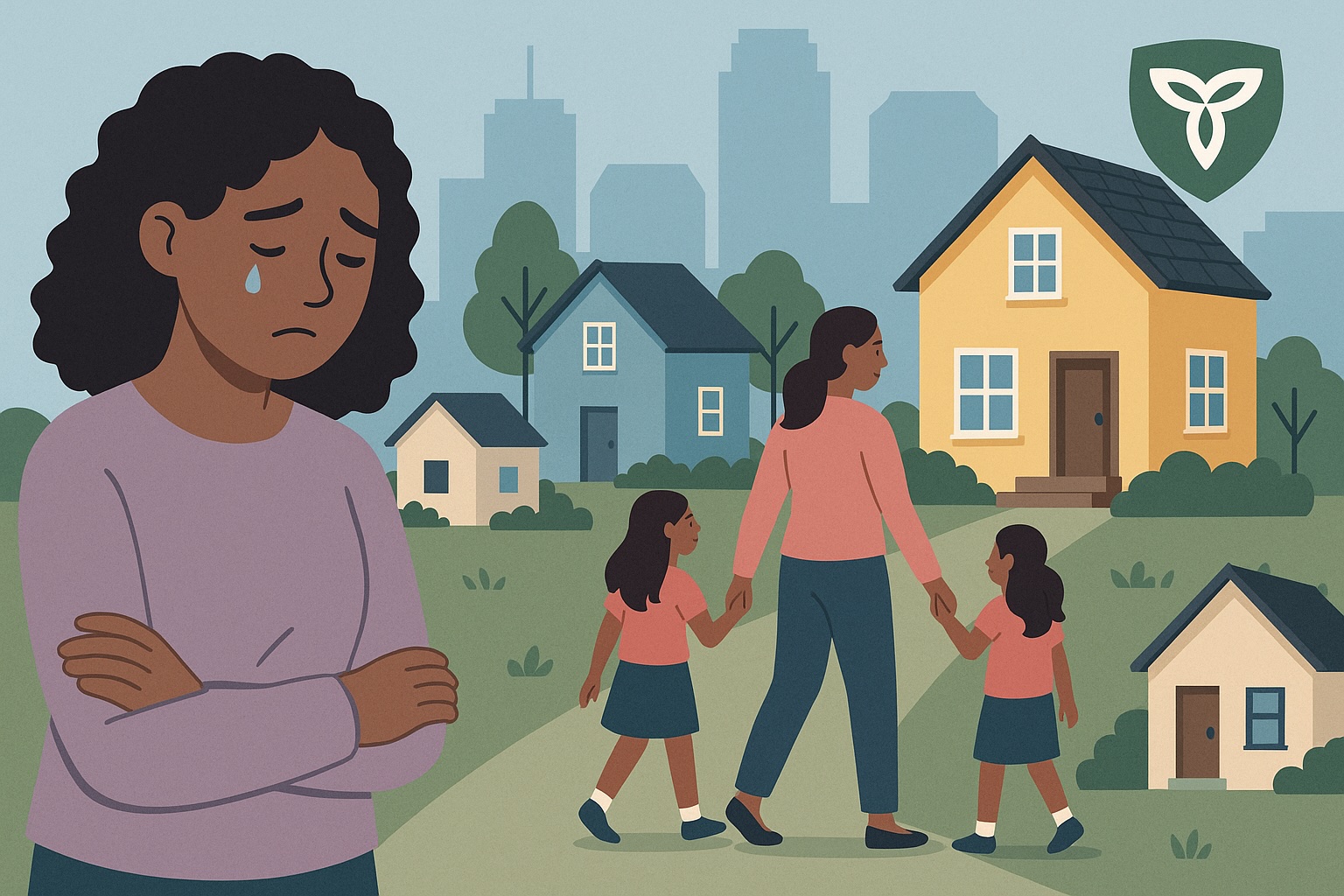Transitional Housing Programs for Domestic Violence Survivors in Ontario
Leaving a shelter is just the first step. Learn how transitional housing programs in Ontario help domestic violence survivors rebuild their lives with safety, support, and independence.

For many survivors of domestic violence, emergency shelters are just the beginning of the journey toward safety and stability. **Transitional housing programs** in Ontario offer **longer-term, supportive housing** where women and children can recover, rebuild, and plan for the future.
This guide explains what transitional housing is, who qualifies, and how to apply.
***
### 🔑 What Is Transitional Housing?
Transitional housing provides **safe, temporary housing**—usually for **6 months to 2 years**—to survivors of abuse. These programs bridge the gap between emergency shelter and permanent housing.
Key features include:
* Longer stays than emergency shelters
* Private or semi-private units (individual apartments or shared spaces)
* On-site or remote support services
* Rent geared to income or subsidized
***
### 🎯 Who Is Transitional Housing For?
These programs are for:
* Women (and their children) who have **left an abusive relationship**
* Survivors who have **completed a shelter stay** or are ready to live more independently
* Women needing **more time to find permanent housing or employment**
* Survivors with **immigration, legal, or custody challenges**
> Transitional housing is often step two after an emergency shelter stay.
***
### 🛠️ What Services Are Offered?
Most transitional housing programs in Ontario offer:
* **Individual case management** and safety planning
* **Counseling and trauma recovery** sessions
* **Life skills workshops**, including budgeting, parenting, and employment readiness
* **Legal support**, such as help with custody, restraining orders, or immigration
* **Childcare support** or programming for children
* **Referrals to permanent housing** and social services
***
### 📍 How to Apply for Transitional Housing
* **Ask your emergency shelter** to make a referral to a transitional program
* **Call local women’s centres** or housing support programs
* **Contact 211 Ontario** for program listings near you
* **Prepare documents** like ID, proof of income, and safety concerns (if available)
> Programs may have waitlists. Apply early and ask about short-term options in the meantime.
***
### 💡 Is Transitional Housing Free?
* Many programs offer **rent-geared-to-income housing**
* Some have **fully subsidized units** depending on funding
* Support services are typically free, but residents may pay a small portion of rent based on income
***
### 🧭 Examples of Transitional Housing Programs in Ontario
* **YWCA Toronto and Hamilton** – Offers several programs for women and children fleeing abuse
* **Interval House (Toronto)** – Provides transitional housing with wraparound support
* **Nellie’s** – Offers a transitional program for women and trans survivors
* **Maison Interlude House (Eastern Ontario)** – Bilingual transitional housing and outreach
> Each program has its own eligibility rules—call ahead or ask for a referral through a shelter or women’s centre.
***
### 📌 Summary: Transitional Housing for DV Survivors
* ✅ Offers **safe, affordable housing** after emergency shelter stays
* ✅ Provides **counseling, legal help, and life skills** support
* ✅ Supports **women and children** for 6–24 months
* ✅ Accessible through **referral or direct application**
* ✅ A bridge between crisis and permanent independence
***
### 📞 Where to Get Help
* **Assaulted Women’s Helpline** – 1-866-863-0511
* **211 Ontario** – Dial 2-1-1 or visit [211ontario.ca](https://211ontario.ca/)
* **Women’s Shelters Canada** – [sheltersafe.ca](https://sheltersafe.ca/)
* **Your local YWCA, Interval House, or women's support centre**
***
### Frequently Asked Questions (FAQs)
#### 1. How is transitional housing different from an emergency shelter?
An emergency shelter provides immediate, short-term safety (usually for a few weeks). Transitional housing is a longer-term solution (months to years) that provides more independence while still offering crucial support services, helping survivors prepare for permanent housing.
#### 2. What kind of support is offered in transitional housing?
Beyond a safe place to live, these programs offer comprehensive "wraparound" support. This often includes counselling, legal assistance, help with job searching and education, parenting support, and workshops on financial literacy.
#### 3. How do I apply for a transitional housing program?
The most common pathway is through a referral from an emergency shelter where you are staying. If you are not in a shelter, you can contact your local women's centre or housing support agency to ask about the application process for programs in your area.
#### 4. Are there long waitlists for these programs?
Yes, unfortunately, the demand for transitional housing in Ontario is very high, and there are often long waitlists. It is important to apply as early as possible and to ask the program staff about any short-term support options that may be available while you wait.
#### 5. Do I have to pay rent in transitional housing?
It depends on the program. Many transitional housing programs offer rent-geared-to-income (RGI) units, where your rent is calculated as a percentage of your income. Some may be subsidized, offering rent at a rate below the market average.
#### 6. Are there programs for specific communities?
Yes. Many organizations aim to provide culturally specific support. For example, some programs are specifically for Indigenous women or 2SLGBTQ+ survivors, ensuring the environment is not only safe but also affirming and understanding of their unique experiences.
